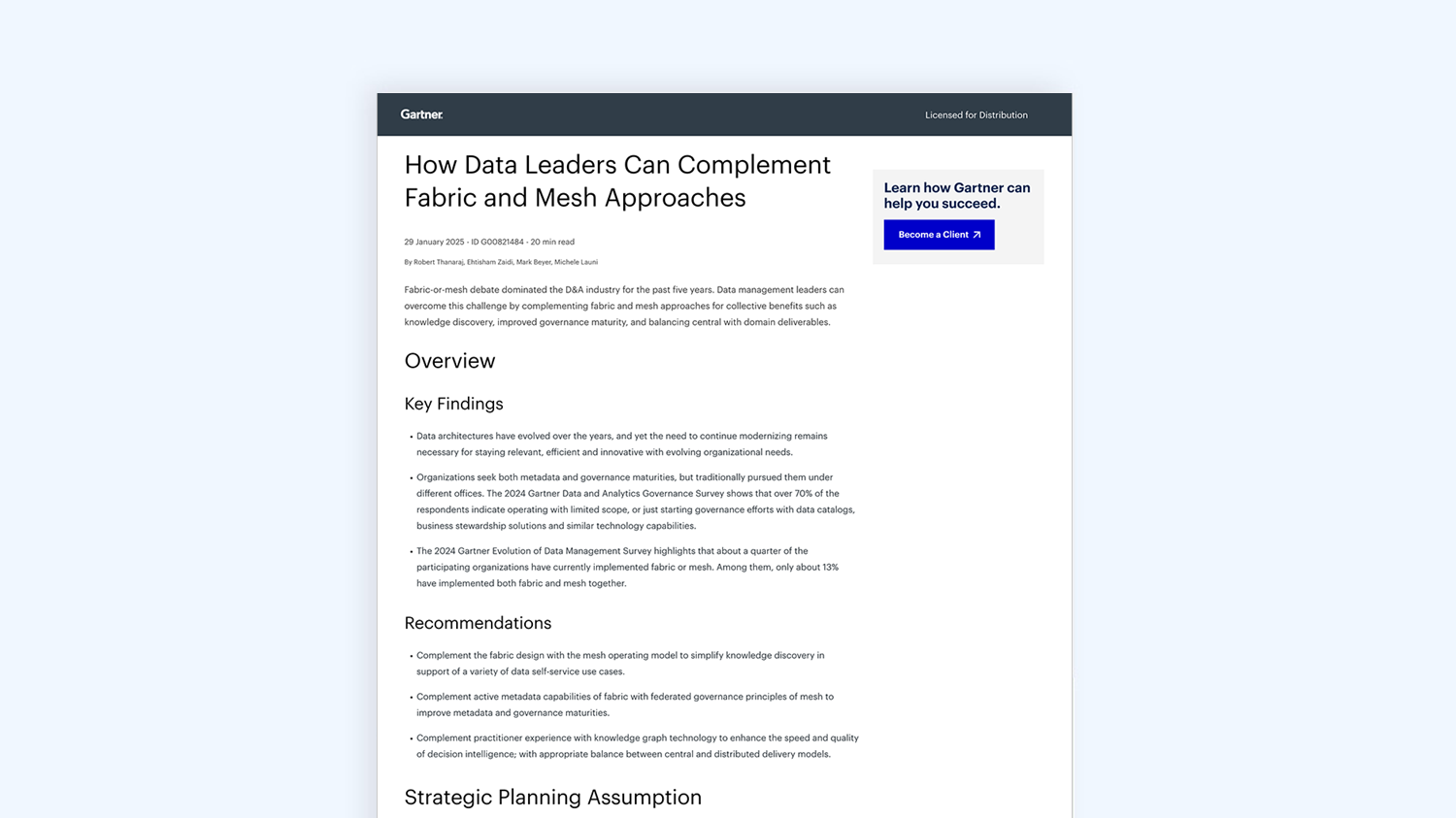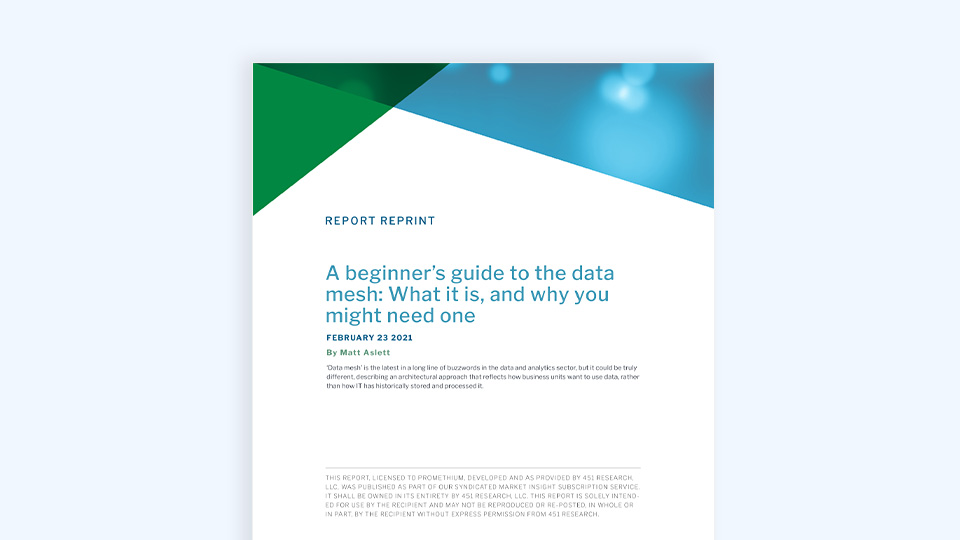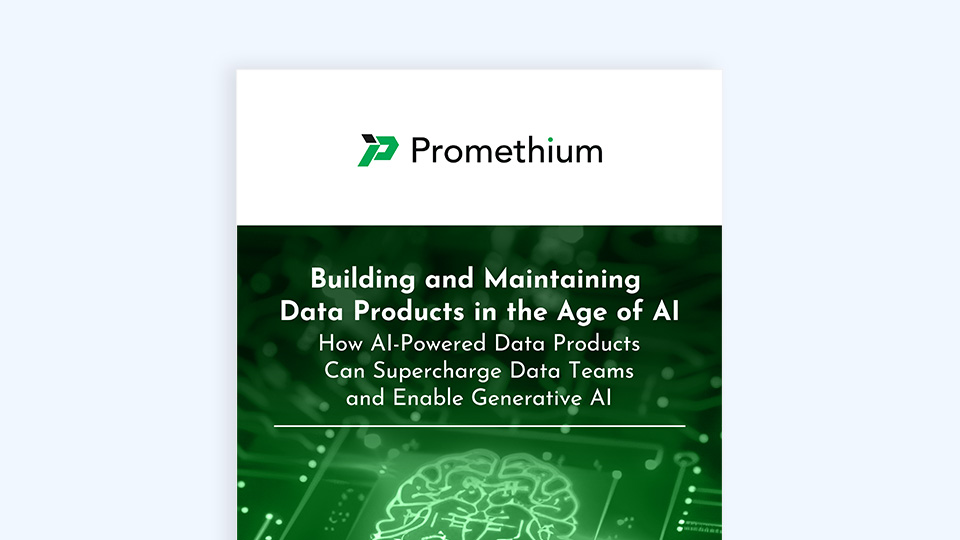Table of Content
- What is Data Mesh
- Data Mesh vs Traditional Data Architecture
- The Four Core Principles of Data Mesh
- Benefits of Data Mesh Implementation
- Data Mesh vs Data Fabric vs Data Lakehouse
- Common Data Mesh Implementation Challenges
- How to Implement Data Mesh: Step-by-Step Guide
- Data Mesh Best Practices
- Data Mesh FAQs
- Further Resources
What is Data Mesh?
Data mesh is a modern, decentralized data architecture approach that shifts data ownership from centralized teams to individual business domains. Unlike traditional centralized data architectures, data mesh treats data as a product and enables self-service data access across organizations.
In a data mesh architecture, each business domain — such as marketing, finance, or supply chain — owns and manages its own data products with clear accountability and built-in quality standards. This approach eliminates the bottlenecks created by centralized data teams and enables faster, more scalable data operations.
Key Data Mesh Characteristics
Domain-oriented Data Ownership
Business domains control their own data
Data as a Product Mindset
Data is treated like a deliverable with users and SLAs
Self-service Data Infrastructure
Abstracted tools enable easy data access
Federated Computational Governance
Automated, standardized governance across domains

Data Mesh vs Traditional Data Architecture
Traditional centralized data architectures are breaking down under the demands of modern organizations. Here’s why data mesh is gaining traction as a superior alternative.
Problems with Centralized Data Architecture:
Data Team Bottlenecks
Central data teams become overwhelmed with requests they can’t process quickly, creating delays across the organization.
Slow Time to Insights
Business teams wait days or weeks for answers to simple questions because everything flows through a single team.
Lack of Data Ownership
No clear accountability for data quality leads to duplication, confusion, and inconsistent results.
Tool Fragmentation
Each team adopts its own stack, increasing silos and operational complexity.
How Data Mesh Solves These Issues
Challenge | Centralized Model | Data Mesh Solution |
Data Ownership | Centralized in one team | Distributed to domain experts |
Delivery Model | Request-based bottlenecks | Self-service access |
Scalability | Limited by team bandwidth | Scales with organization growth |
Context & Usability | Often missing or incomplete | Owned and embedded in each domain |

The Four Core Principles of Data Mesh
Every successful data mesh implementation is built on these four foundational principles:
Domain-oriented Data Ownership
Teams closest to the data manage it directly, improving accuracy, context, and responsiveness. This principle ensures that subject matter experts maintain control over their domain’s data products.
Data as a Product
Data isn’t just a byproduct of business operations — it’s a deliverable with users, documentation, SLAs, and quality standards. This product mindset drives better data quality and usability.
Self-Service Data Infrastructure
Platforms and tools are abstracted for ease of use, reducing dependence on central engineering teams. Users can access and work with data without technical barriers.
Federated Computational Governance
Governance is automated and standardized — not manual or ad hoc. This enables global policies with local control, balancing autonomy with compliance requirements.

Benefits of Data Mesh Implementation
Organizations adopting data mesh architecture experience significant improvements across multiple dimensions:
Faster, Domain-Aligned Insights
With ownership and context embedded in each domain, teams don’t wait on central data teams to build pipelines or translate requirements. Business teams get answers faster with fewer back-and-forth cycles.
Improved Data Ownership and Accountability
In a data mesh, every domain is responsible for the data it produces and serves. This encourages better documentation, higher quality, and clearer expectations around data products.
Reusable, Productized Data Assets
Treating data as a product means it’s built to be used by people, applications, and AI systems. Data products become easier to find, trust, and reuse across teams.
Enhanced AI and Advanced Analytics Support
AI depends on high-quality, well-contextualized data. By organizing data around business domains and exposing it through self-service tools, data mesh makes AI initiatives more scalable and effective.

Data Mesh vs Data Fabric vs Data Lakehouse
Understanding how data mesh compares to other modern data architectures helps you choose the right approach:
Feature | Data Mesh | Data Fabric | Data Lakehouse | Centralized Model |
Ownership Model | Domain-based | Central or hybrid | Centralized | Centralized |
Primary Goal | Decentralize + scale access | Integrate + connect sources | Combine warehouse + lake | Control + consistency |
Self-Service Support | Required | Often included | Varies | Limited |
Governance Approach | Federated | Embedded / active | Varies | Centralized enforcement |
Ideal Use Case | Distributed orgs with strong domains | Complex, multi-system environments | Unified analytics + ML | Small teams, static reporting |
When to Choose Each Architecture:
- Use Data Mesh when scaling across domains with varied use cases and teams that want ownership and accountability.
- Use Data Fabric when your main challenge is stitching together multiple systems and platforms with seamless integration.
- Use Data Lakehouse when combining structured and unstructured data for analytics and machine learning in one unified platform.
- Use Centralized only when simplicity and control outweigh flexibility requirements.
Can They Work Together?
Yes! Many organizations use data fabric for integration and governance while applying data mesh principles for domain-level ownership. These models often complement each other rather than competing.

Common Data Mesh Implementation Challenges
While data mesh offers clear benefits, implementing it requires addressing several key challenges:
Data Discoverability Across Domains
When ownership is distributed, teams struggle to find and understand data owned by other domains. Without strong metadata and cataloging systems, discoverability breaks down quickly.
Unclear Definitions of "Data as a Product"
Many teams label data as a product without defining quality, usability, or documentation standards — leading to confusion and inconsistent user experiences.
Lack of Self-Service Infrastructure
If users still rely on central teams or manual processes to access and query data, the mesh model fails. True mesh requires abstracted, user-friendly tooling.
Balancing Autonomy with Governance
Giving domains control can introduce risk without consistent governance frameworks. Without automation and shared policies, compliance and data quality suffer.
Challenge | Impact | Solution |
Poor discoverability | Data silos persist across domains | Implement robust metadata catalogs |
Vague product definitions | Limited reuse and trust | Define clear data product standards |
No self-service access | Bottlenecks remain, just decentralized | Invest in abstracting or data fabric tooling |
Weak governance frameworks | Inconsistent quality and compliance risk | Automate federated governance |

How to Implement Data Mesh: Step-by-Step Implementation
Most organizations adopt data mesh gradually rather than overhauling their entire architecture overnight. Here’s a proven rollout pattern:
Step 1: Start with Federated Access
Begin by enabling access to data across domains, even if ownership remains centralized. This builds the foundation for decentralization without major disruption.
Step 2: Introduce Data Product Thinking
Identify high-value datasets and treat them as products with clear owners, documentation, SLAs, and consumers. Start with 2-3 critical data products.
Step 3: Assign Domain Ownership
Once product thinking takes hold, shift ownership of these datasets to the domain teams that create or rely on them most heavily.
Step 4: Layer in Governance and Standards
Implement federated governance — shared policies applied consistently across all domains using automation and metadata management.
Example Domain Implementation
Domain | Data Products | Primary Users |
Marketing | Campaign performance, attribution models | Growth teams, CMOs |
Finance | Budget vs. forecast, spend breakdowns | FP&A, controllers |
Supply Chain | Inventory levels, supplier performance | Ops managers, planners |
Sales | Pipeline velocity, quota attainment | Revenue teams, CRO |

Data Mesh Best Practices
Follow these proven practices to maximize your data mesh implementation success:
Start Small with Real Problems
Begin with one or two domains where data bottlenecks clearly slow business outcomes. Focus on solving specific pain points rather than implementing all four principles simultaneously.
Make Data Discoverable from Day One
Invest in making data easy to find and understand through catalogs, metadata layers, or clear documentation. Discoverability is foundational to any mesh strategy.
Define Clear Data Product Standards
Establish basic requirements for every data product:
- Owner: Who’s responsible for maintenance and quality
- Consumers: Who uses this data and how
- Business Value: What questions it supports
- Documentation: How it’s governed and accessed
Prioritize Interoperability over Reinvention
Avoid rebuilding your entire stack. Use tools that work across cloud providers, platforms, and data sources. Data mesh works best when it complements existing architecture.
Invest in Education and Enablement
Domain teams may not be used to thinking in terms of ownership or product delivery. Provide training, templates, and lightweight processes that make adoption easier.

Data Mesh FAQs
Data mesh focuses on decentralizing data ownership and aligning it with business domains, while data fabric focuses on integrating and governing data across platforms using metadata and automation. They’re not mutually exclusive — many organizations use data fabric technologies to enable data mesh principles.
Not necessarily. You don’t need to restructure your entire company to get started. Many organizations begin by assigning ownership of a few datasets to domain teams and evolving from there.
While especially useful for enterprises with multiple data domains, even mid-sized organizations can benefit — particularly if they struggle with bottlenecks or need to support decentralized teams.
Not effectively. Data products are the backbone of data mesh — they ensure data is reusable, discoverable, and trusted. Without clear definitions, ownership, and standards, mesh implementations devolve into chaos.
Governance in a data mesh is federated: global standards are applied programmatically across all domains, but each domain is responsible for enforcing them locally. This balances autonomy with compliance requirements.
Data mesh isn’t about specific tools — it’s about principles and practices. However, successful implementations typically include data catalogs, metadata management systems, self-service analytics platforms, and automated governance tools.
Your Path to Data Mesh Success
Data mesh represents a fundamental shift in how organizations think about data architecture and ownership. By decentralizing control, treating data as a product, and empowering domain teams, organizations unlock faster insights, stronger accountability, and better alignment with business goals.
The key to success is starting pragmatically. You don’t need to re-platform or restructure overnight. Begin with real problems, implement gradually, and evolve your architecture and culture over time.
Ready to explore how data mesh can transform your organization’s data capabilities? Understanding your current bottlenecks and identifying the domains that would benefit most from increased ownership and autonomy is the first step toward implementation.


